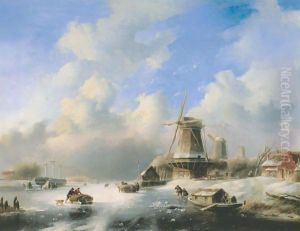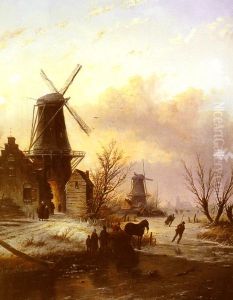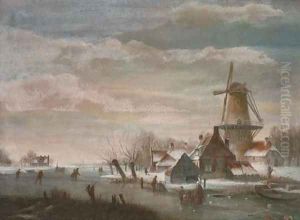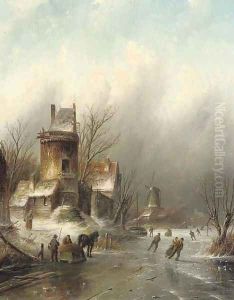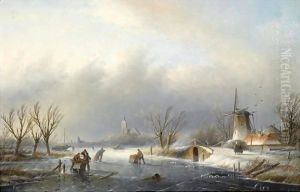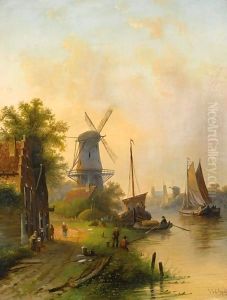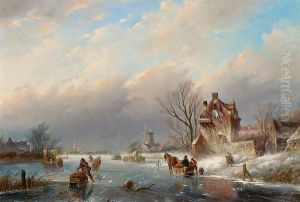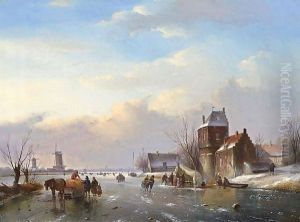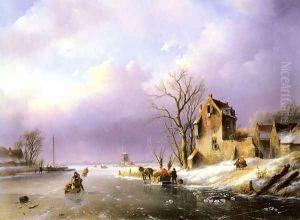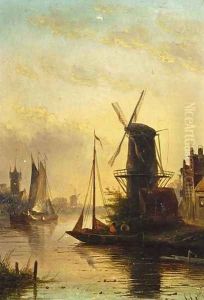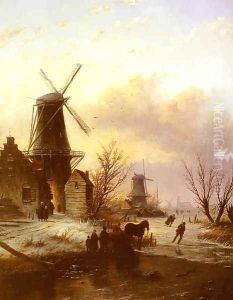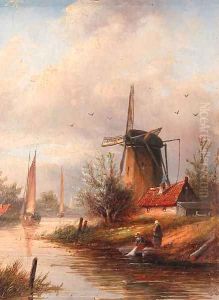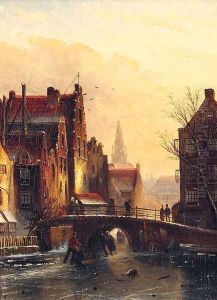Jan Jacob Coenraad Spohler Paintings
Jan Jacob Coenraad Spohler was born in 1837 in Nederhorst den Berg, Netherlands, into a family deeply entrenched in the world of art. His father, Jan Jacob Spohler, was a respected landscape painter, ensuring that Jan Jacob Coenraad was immersed in the artistic tradition from a young age. This environment nurtured his passion for painting, particularly landscapes, which would define his career.
Spohler received his formal art education in Amsterdam, where he studied under various prominent artists of the time. His early works showcased a remarkable adeptness in capturing the Dutch countryside, characterized by meticulous attention to detail and a vibrant palette that reflected the changing seasons and the serene beauty of rural Netherlands.
Throughout his career, Spohler remained deeply influenced by the 17th-century Dutch landscape painters, whose works were renowned for their detailed realism and atmospheric perspective. He was particularly adept at depicting winter scenes, a subject that became a hallmark of his oeuvre. His paintings often featured frozen canals, skaters, and picturesque villages blanketed in snow, rendered with a realism and clarity that were highly appreciated by his contemporaries.
Despite his adherence to the traditional themes of Dutch landscape painting, Spohler's works exhibited a certain freshness and vibrancy, making them distinct. He was skilled in the use of light and shadow, which added depth and dimension to his landscapes. His summer scenes, too, were celebrated for their lush vegetation, tranquil waters, and the peaceful coexistence of humans and nature.
Jan Jacob Coenraad Spohler's contributions to the Dutch landscape genre were significant, yet he remained relatively understated compared to some of his more illustrious contemporaries. Nevertheless, his works were sought after in his time and continue to be appreciated by art collectors and historians for their technical skill and serene beauty.
Spohler's career spanned several decades, during which he exhibited his works at various prestigious venues, contributing to the rich tapestry of 19th-century Dutch art. He passed away in 1923, leaving behind a legacy of paintings that continue to enchant viewers with their timeless appeal and meticulous craftsmanship.










